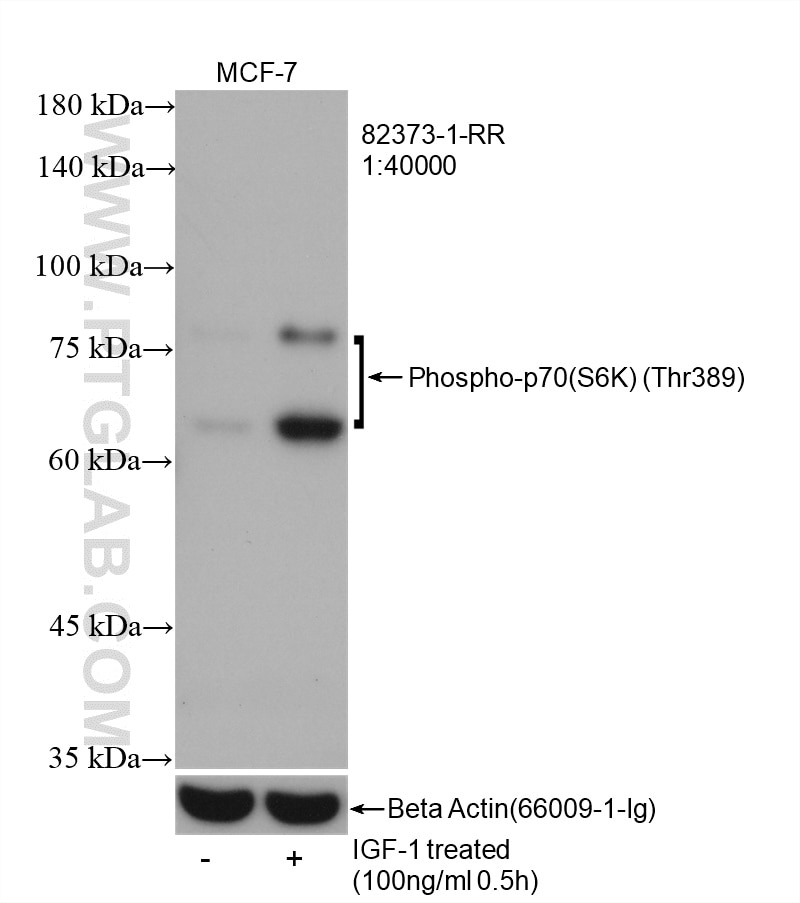Anticorps Recombinant de lapin anti-Phospho-p70(S6K) (Thr389)/p85(S6K) (Thr412)
Phospho-p70(S6K) (Thr389)/p85(S6K) (Thr412) Recombinant Antibody for WB, Indirect ELISA
Hôte / Isotype
Lapin / IgG
Réactivité testée
Humain
Applications
WB, Indirect ELISA
Conjugaison
Non conjugué
CloneNo.
1G15
N° de cat : 82373-1-PBS
Synonymes
Galerie de données de validation
Informations sur le produit
82373-1-PBS cible Phospho-p70(S6K) (Thr389)/p85(S6K) (Thr412) dans les applications de WB, Indirect ELISA et montre une réactivité avec des échantillons Humain
| Réactivité | Humain |
| Hôte / Isotype | Lapin / IgG |
| Clonalité | Recombinant |
| Type | Anticorps |
| Immunogène | Peptide |
| Nom complet | ribosomal protein S6 kinase, 70kDa, polypeptide 1 |
| Poids moléculaire observé | 65-85 kDa |
| Numéro d’acquisition GenBank | NM_003161 |
| Symbole du gène | p70 S6K |
| Identification du gène (NCBI) | 6198 |
| Conjugaison | Non conjugué |
| Forme | Liquide |
| Méthode de purification | Purification par protéine A |
| Tampon de stockage | PBS only |
| Conditions de stockage | Store at -80°C. 20ul contiennent 0,1% de BSA. |
Informations générales
The Rps6kb1 gene encodes the 70 kDa ribosomal protein S6 kinase (p70S6K), which is a serine/threonine kinase regulated by phosphoinositide 3-kinase (PI3K)/mammalian target of rapamycin (mTOR) pathway. P70(S6K) plays a crucial role in controlling cell cycle, growth and survival. The PI3K/mTOR signalling pathway is one of the major mechanisms for controlling cell survival, proliferation and metabolism and is the central regulator of translation of some components of protein synthesis system. Due to alternative translation two isoform S6K1 proteins are known to exist in mammalian cells: p85(S6K) and p70(S6K), which is identical to p85(S6K) but lacks its first 23 amino acids. In addition, mammalian cells express a second S6K1 isoform spanning 316 amino acids (p31 S6K1). mTOR is know to phosphorylate and thereby activate p70(S6K) at Thr389 and p85(S6K) at Thr412. (PMID: 25100792, PMID: 24970012, PMID: 21602892)



